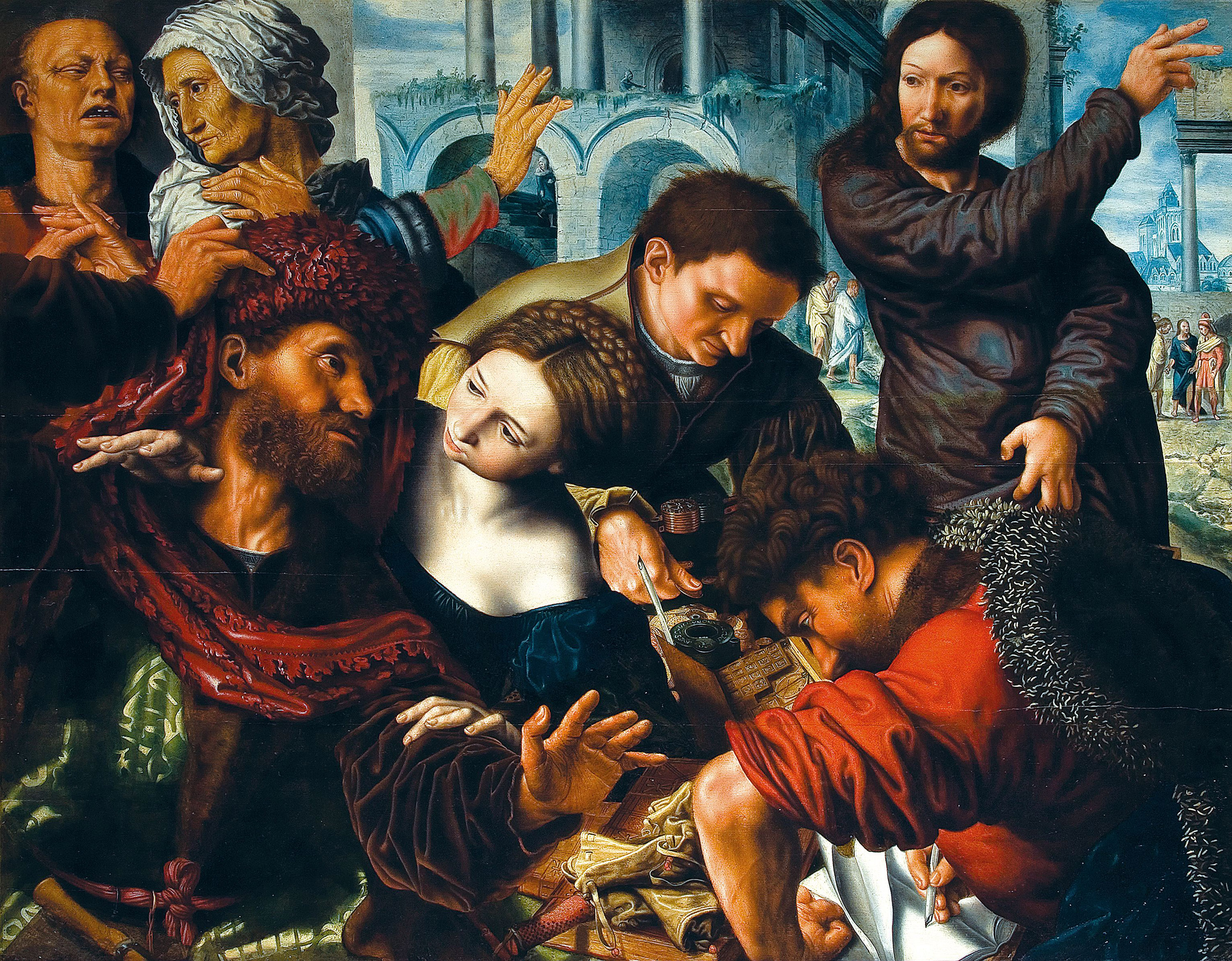In The Calling of Saint Matthew by Netherlandish painter Jan Sanders van Hemessen shows the moment Jesus imperatively calls Matthew to follow Him. As a result, the tax collector in Capernaum turns into one of the twelve apostles and author of the first Gospel.
Matthew sits in the corner opposite to Jesus. He wears a rich robe and a fancy headdress in fashion a hundred years earlier. By the mid-16th century this strange turban was specifically associated with moneylenders and bankers. The two young men busy counting money and filling in ledgers are totally unaware of the momentous event that goes on right under their eyes: in answer to Jesus’s call, Matthew removes his headdress, ready to give up all worldly possessions. While this foreground scene reflects contemporary life in Antwerp (some identified Matthew with the Holy Roman Emperor Charles V), the Classical buildings behind speak of a Biblical time. Such blending in of the contemporary and the Biblical is suggestive of history repeating itself. By the middle of the 16th century Antwerp, a turning point in world trade, was relying heavily on the fortunes of merchants and bankers. Could this be what the two characters behind Matthew are discussing so vividly?



